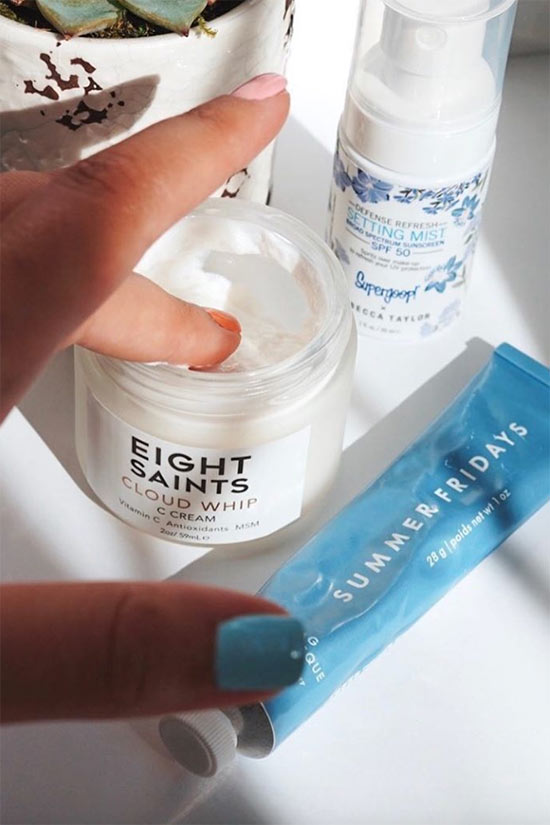Combination skin is often treated as an afterthought (I’ve been guilty of that myself) but the truth is that it’s probably the most common of all the skin types! This is because skin type categories are not very well set. Skin types actually exist on a spectrum, with oily on one end, dry on the other, and combination skin taking up most of the space in the center.
Because of this, caring for combination skin is not cut and dry, and as a result, it can be hard to find good advice. It’s extra important for me to make this post as comprehensive and accurate as possible because I, myself, have combination skin. It’s time to represent!
In this article, I explain exactly what combination skin is and go over its typical characteristics. I talk about what causes so many people to have combination skin and clear up the distinction between combination-dry and combination-oily skin. You’re here for solutions, so I’ll explain how to improve the look and feel of your skin with the right ingredients put together into the perfect skincare routine for combination skin.
In this article:
- What Is Combination Skin?
- Combination Skin Characteristics
- Combination Skin Causes
- Combination-Oily vs. Combination-Dry
- How to Improve Combination Skin
- Best Skincare Ingredients for Combination Skin
- The Ultimate Daytime Skincare Routine for Combination Skin
- The Ultimate Nighttime Skincare Routine for Combination Skin
- Weekly Skincare Routine for Combination Skin
What Is Combination Skin?
Combination skin refers to a skin type that sits somewhere on the spectrum between dry and oily. Some parts of the face are oilier, while others are a little drier. In most cases the oiliest part of the face is the T-zone, which encompasses the forehead, nose, chin, and sometimes the parts of the cheeks closer to the nose, while the driest parts of the face are the cheeks, jawbone, and the area around the eyes. Of course, exceptions do occur, but they are quite rare.
Those with oily skin tend to be extra oily in the T-zone, while those with dry skin tend to be extra dry in the cheeks, so in a way combination skin types just sit in between dry skin and oily skin. Skin types are like a spectrum, and combination skin takes up the most space on it, while the other two skin types sit on the two ends.
Some people find that their combination skin leans towards drier, while others find it leans more towards oily. For many, this change can come with the seasons, as they feel oilier in summer and drier in winter.

Combination Skin Characteristics
What are the main symptoms of combination skin? Watch out for the following!
• Uneven Oil Production over the Face
Sebum production is the main (and maybe only) factor by which skin types are determined, so combination skin means that the skin produces neither too much nor too little oil as a whole, although certain parts of the face (usually the T-zone) will be oilier than other parts (usually the cheeks). To determine if you have combination skin, wash it with a mild cleanser and then wait an hour or two – if some parts of your skin feel oily while others feel a little tight then you probably have combination skin.
• Varying Pore Size
Though oil production is the most concrete determining factor of skin type, looking at pore size can be easier. If you have nearly invisible pores in some parts of your face (usually the cheeks) and medium to larger parts in others (T-zone), then you probably have combination skin.
• Occasional Breakouts and Clogged Pores, Usually on Oily Parts of the Face
No skin type is immune from acne, with dry skin included. However, in general, those with combination skin will not break out as much as those with oily skin, and the breakouts tend to be localized to the oilier parts of the face.

Combination Skin Causes
As with any skin type, combination skin shows up mostly because of genetics, so the only people you can really blame it on are your parents.
The determining factor of every skin type is oil (or rather, sebum) production. Facial oil is produced by the sebaceous glands, which are located in the dermis where they are attached to our hair follicles. In almost all humans the central part of the face is usually home to more sebaceous glands than the outer parts, which explains the oily-dry division that exists in those with combination skin.
Combination-Oily vs. Combination-Dry
One thing worth noting about combination skin is that extreme polarization is fairly rare. It is very unusual for someone to have an extremely oily T-zone and an extremely dry cheek area. When it does occur, it is almost always a result of a compromised skin barrier and serious dehydration, which can make dry skin feel drier and oily skin to misbehave and become problematic.
Otherwise, combination skin has two directions it can lean in, which is where the terms combination-oily skin and combination-dry skin come from. Simply put, some people with combination skin find that the oily parts of their face give them more trouble, while others find that the dry parts of their face are the ones that require the most attention.
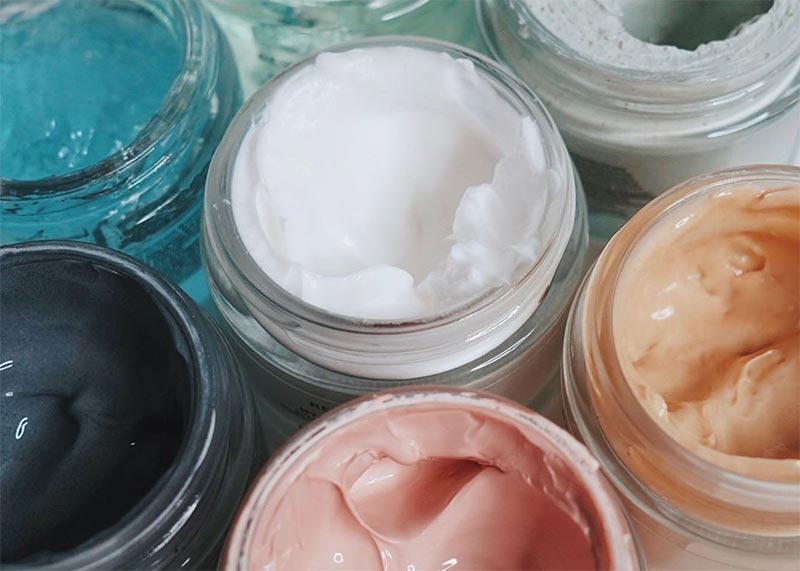
How to Improve Combination Skin
The best way to take care of combination skin is to use balanced, gentle skincare products. When it comes to choosing skin care, it’s all about finding textures that are not going to be too heavy for your oily parts that are also not going to be too light for your dry parts.
Focusing on hydration is always a good idea. Dehydration makes all skin types look bad, while increased hydration can improve the functioning of both the dry and oily parts of the skin.
A good skincare routine for combination skin that keeps the skin clean, hydrated, exfoliated, and protected from the sun is all it takes to keep things balanced and healthy. When I sat down to write this article I decided that I didn’t want to make too many suggestions that would involve putting certain products only on certain parts of the face.
Those with combination skin are probably very used to the suggestion that they use a heavier moisturizer on their dry parts and a lighter moisturizer for oily parts, but as far as skincare suggestions go I don’t think this one is really practical. You’re not going to have a totally different skincare routine for each part of your face.
Perhaps you’ll find that you can apply a hydrating serum all over your face and then only put moisturizer on the dry parts, but going too much beyond that isn’t practical for 90% of us.
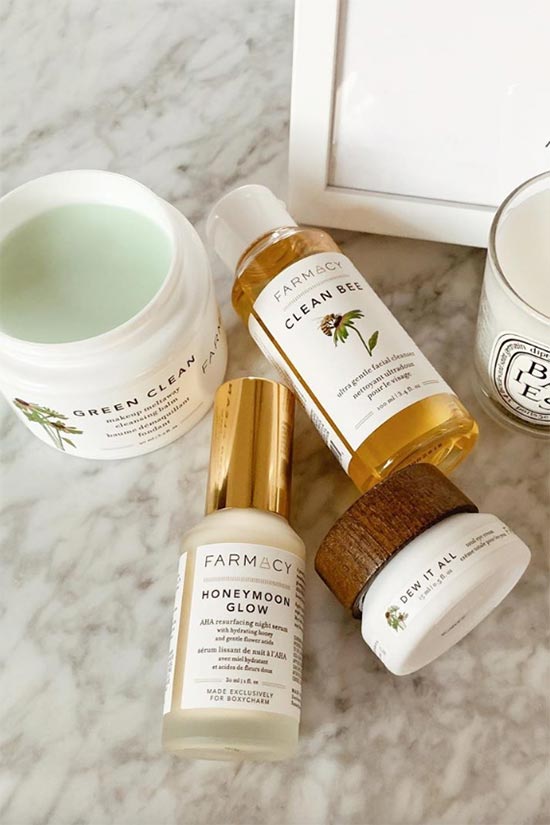
Best Skincare Ingredients for Combination Skin
So if you have the combination skin type, there are certain ingredients you should look for in the skin care you choose.
• Hydrators
Humectants like glycerin, hyaluronic acid, panthenol, and butylene glycol are the key ingredients that will keep your combination skin hydrated, by pulling moisture in from the atmosphere and into the top layers of skin.
Hydration is very important for both oily and dry skin types, so it only follows that it will also be critical for combination skin. Hydrated skin looks healthier, plumper, and more luminous. Both fine lines and pores appear smaller, and the overall texture is smoother and softer.
Beyond that, when the skin is fortified with water and water-binding humectants, it is more resistant to infiltration from irritants and bacteria, so this helps stave off both irritation and breakouts. Essences, serums, moisturizers, and masks are the best sources for these hydrating ingredients.
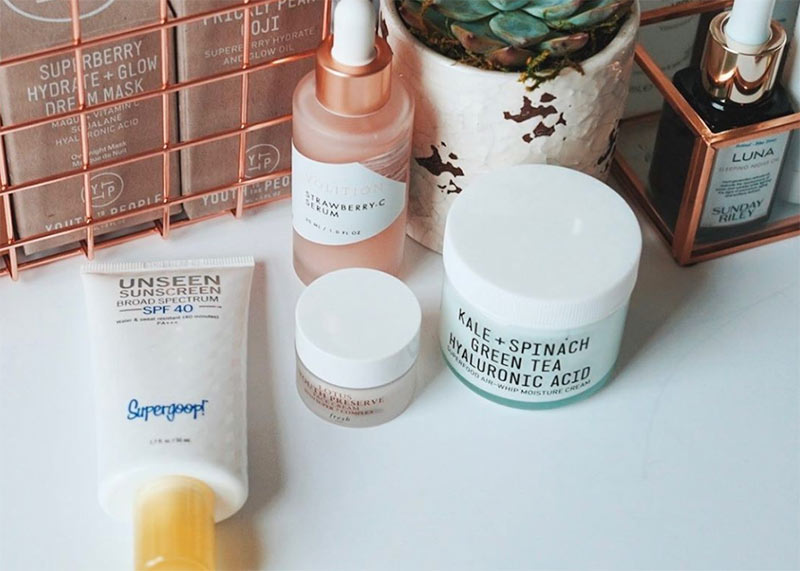
• Exfoliants
Exfoliation is a very important part of a good skincare routine for combination skin. As always, I prefer chemical exfoliants since they are able to remove dead skin in a gentle and thorough manner.
Salicylic acid is the preferred exfoliant for those with combination skin because it can get through the oils and exfoliate within the pore, but is gentle enough not to dry out or irritate the dry parts of the skin. You can also experiment with combinations of glycolic acid and gentler exfoliants like mandelic or lactic acid. If your skin is hearty, then you can throw glycolic acid into the mix as well.
• Emollients and Occlusives
Comprehensive moisturization has three parts: humectancts, which I’ve already mentioned, as well as emollients and occlusive, which come in the form of botanical oils, ceramides, cholesterol, silicones, petrolatum, and fatty acids. These are very common ingredients in moisturizers, although they are used more sparingly in essences and serums.
The sebum our skin produces is actually very effective as an emollient (something that fills in the gaps between the dead skin cells to make the stratum corneum stronger, softer to the touch and suppler) and as an occlusive (something that blocks moisture from escaping from the skin), so those who have combination skin that leans towards oily may not require creams rich in these ingredients.
They are indispensable, however, for those whose combination skin leans towards dry. If your skin is very polarized then you may choose to only apply creams rich in emollients and occlusives to the dry parts of your face.

• SPF
Sun protection is another one of those things that are critical no matter the skin type. A moisturizer or sunscreen with an SPF of at least 30 will do wonders for keeping your skin healthy in the long term.
Sun exposure is responsible for many surface elements of skin aging like fine lines and wrinkles, but even worse than that, it can lead to skin cancer down the line. Those with combination skin should choose lightweight sunscreens, and can even use them instead of a moisturizer in the daytime.
• Antioxidants
Antioxidants can come from botanical oils and plant extracts, or they can be synthesized and put straight into a skincare formula. Antioxidants are phenomenal for helping stave off premature aging caused by sun exposure and pollution, since they stop free radical damage at its tracks.
A lot of antioxidants have multiple benefits beyond preventing premature aging. Niacinamide, for example, can also help with preventing transepidermal water loss, brightening the skin, and controlling oil production. Vitamin C is great for supporting collagen production and for fading hyperpigmentation. Green tea extract, in addition to containing a lot of different antioxidant compounds, is also great for soothing sensitive skin.
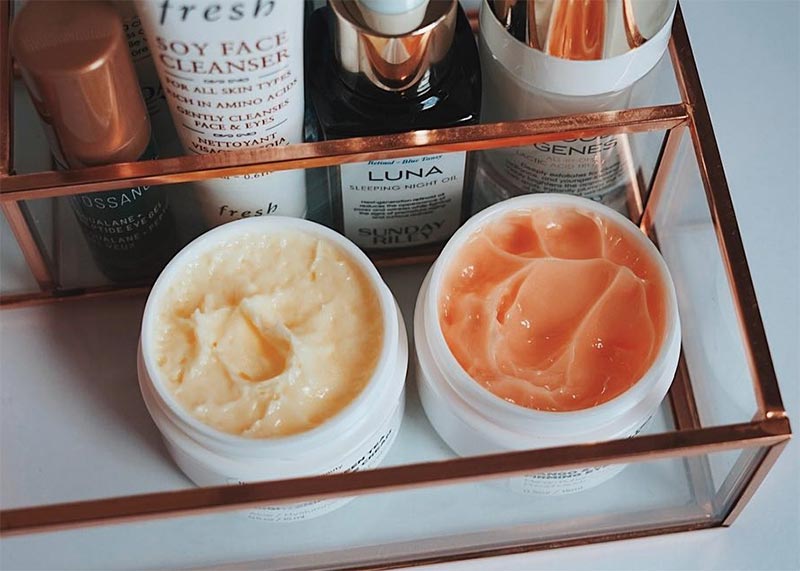
• Deep Cleaners
For those with combination skin that can get very oily, a clay, mud, or charcoal mask can be a really nice occasional treat. Clays are wonderful for pulling oils as well as debris from the skin.
Kaolin clay is probably the best mask ingredient to look for if you would like to apply it all over the skin, since it is not too drying and is not likely to irritate or dehydrate your dry areas. Other clay masks might not be suitable for applying all over the face, and should only be applied in the oily areas.
• Others
While a skin type cannot change, skin concerns absolutely can with the use of the right skincare products. Those with combination skin can have all kinds of skin concerns, so it’s hard to pinpoint literally every ingredient that might be beneficial.
If your main concerns are fading existing signs of aging like fine lines, opt for strong skin rejuvenators like retinoids or peptides. If your concerns have to do with hyperpigmentation, then your best bet is vitamin C, licorice root extract, or alpha-arbutin.
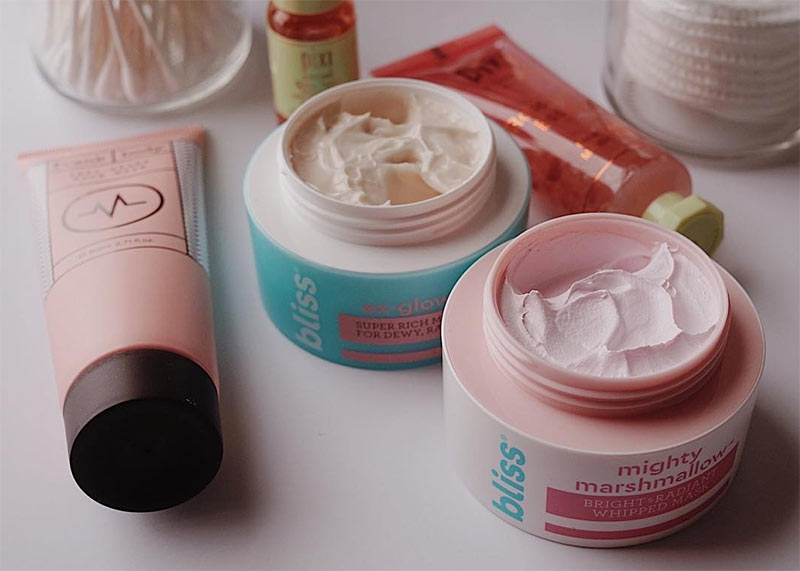
For acne, the best overall treatment would be regular chemical exfoliation (especially with salicylic acid). Retinoids are also quite useful, as are spot treatments with benzoyl peroxide, azelaic acid, or tea tree oil.
Sensitive combination skin types will greatly benefit from products that contain anti-inflammatories like allantoin, centella asiatica extract, or willow bark extract.
The Ultimate Daytime Skincare Routine for Combination Skin
Early in the morning, start your combination skin routine following these practical and effective steps:
Step 1: Cleansing Is Optional
Unless you happened to wake up with extra oily skin on a particular morning, it is generally better to skip cleansing in the mornings altogether. Wiping your face with a cotton pad saturated in toner or just a damp face cloth is usually enough for most people with combination skin.
If you do have to cleanse, opt for a gentle cleanser, and don’t let it be in contact with your face for longer than 15 seconds – this isn’t the evening when you have to remove a day’s worth of sunscreen, makeup, and grime.
Step 2: Toner/ Essence
In the morning, a toner or essence can act as an additional hydrating step that will give relief to both the dry and oily parts of your combination skin. Essences are usually composed of a mixture of pore-tightening anti-inflammatories and hydrating humectants, and they are almost never going to make your skin feel greasy.
Unless you’re also using this step as a way to remove minor impurities from the skin (in which case you should wipe them on with a cotton pad, as I previously described), it is actually better to apply them directly to the skin either by misting them on or by dispensing a bit into your hands and then pressing it into the skin.
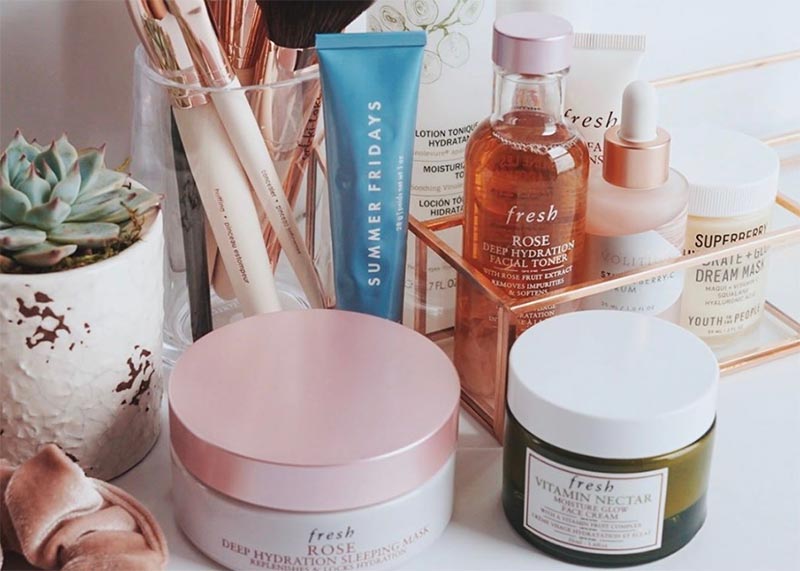
Step 3: Serum or Moisturizer
For those with combination skin, especially if it leans a little towards oily, it is generally best to use either a serum or a moisturizer in the daytime, but not both – particularly if you’re using a separate sunscreen for SPF protection. Serums are often just occlusive enough to be excellent daytime moisturizers for those with combination skin.
In general, when choosing a serum or moisturizer, opt for one that contains lots of hydrating ingredients, some occlusive ones, and antioxidants to help stabilize your sunscreen and to stave off photoaging.
Unless your skin is sensitive, dispense a pea-sized amount of serum or moisturizer and then massage it into your skin in circular, upward motions. If this tugs too much on your skin, then utilize a gentle pressing method instead.
Step 4: SPF
The final step of your morning skincare routine should always be sun protection! Opt for a sunscreen that is neither overly mattifying nor greasy. Lighter sunscreens are great because they are easier to spread over the skin but they also sink in quickly so they won’t make your T-zone shiny.
It’s important to use a full ¼ teaspoon of sunscreen to totally cover the average human face and to give the full SPF protection listed on the bottle. Apply a sunscreen exactly as you would a moisturizer. If you find that your sunscreen takes too long to sink in, you can split it up into two applications of a ⅛ teaspoon.
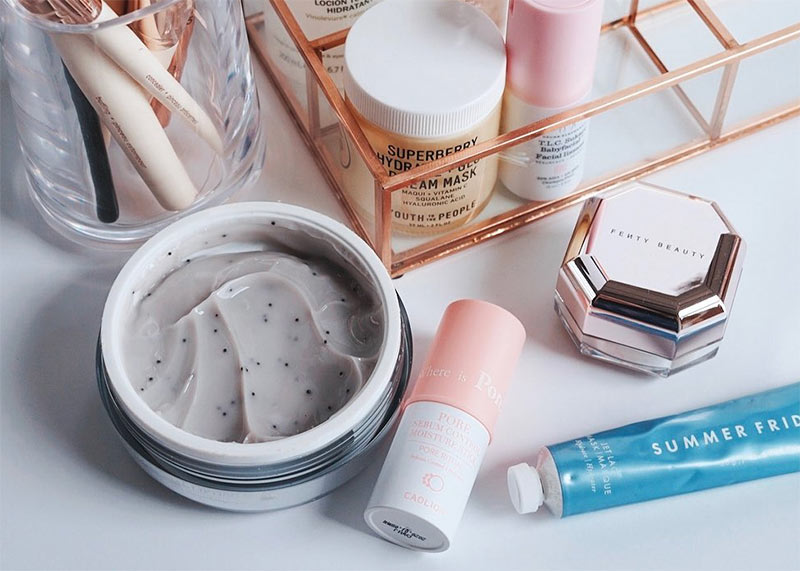
The Ultimate Nighttime Skincare Routine for Combination Skin
After the hard working day or one spent in the sun just lounging, you shouldn’t forget about your skin routine.
Step 1: Cleanse
The best cleansers would be light foam or gel cleansers that are sulfate-free and with a low pH so that they can remove just the right amount of oil and debris without stripping the skin or drying it out. If your skin feels tight or dry after you’ve cleaned it, then your cleanser is too harsh.
If you wear a lot of makeup, you might find that double cleansing will work better. Without adding any water, massage a balm or oil cleanser into your skin first to break down your makeup and sunscreen. Add a bit of water to emulsify the cleanser, and then rinse it away with water or wipe it off with a damp face cloth.
Then you can do a second cleanse with your gel or foam cleanser to eliminate the oil residue. Dampen either your face or your hands, and then dispense a small amount of cleanser. Massage it into your skin for 10-15 seconds (you can massage for up to a full minute if you’re only doing a single cleanse), and then rinse away with water or wipe off with a damp face cloth.
Step 2: Exfoliant
The evening is the best time to exfoliate the skin, and as always, it is better to use a chemical exfoliant like salicylic acid than to use a physical scrub. Salicylic acid is usually the best exfoliator for combination skin types because it is gentle enough not to irritate the dry areas but it is also able to get past facial oils and exfoliate within the pore. Chemical exfoliants come in all forms, so apply your chemical exfoliant as directed on the package.
Step 3: Essences, Ampoules, and Serums
After applying a chemical exfoliant, a great optional step for those with combination skin is to apply either an essence, a serum, an ampoule, or all of the above. Any one of these products can load your skin up with a little bit of extra hydration, which is especially great at times when your combination skin leans a little bit towards drier.
This step is also great for applying specific skin treatments, like a serum with retinol to help fade fine lines and improve skin texture, or a vitamin C and licorice root extract serum to help brighten the skin. If you don’t have any specific concerns, you could benefit from a general hydrating, antioxidant-laden serum.
Apply your essences and serums as was described in the morning routine – splash or mist on your essence, and apply serums with either a gentle patting motion or a more invigorating massage.
Step 4: Spot Treatments
Not everyone with combination skin will require an acne spot treatment, but if you happen to be one of the unlucky few who break out, then a good spot treatment is a godsend, especially if your chemical exfoliant isn’t doing a good enough job on its own.
Some spot treatments are better applied before serums and essences, but I highly recommend spot treatments with benzoyl peroxide or tea tree oil, which are better applied afterwards to avoid irritation. The amount of spot treatment you will need depends on how much you break out.
Simply dispense a bit, and press it over the areas where your active breakouts are. Give it a few moments to sink in a bit and then move on to the final step.

Step 5: Moisturizer
Your nighttime moisturizer will probably be the richest and heaviest product in your combination skincare routine. You don’t want to use something so heavy in the daytime, as it’ll make your skin look shiny, but at night you can really benefit from the potentially greasy occlusive ingredients.
I’ve mostly recommended cream-based moisturizers, but if your skin is combination leaning towards oily, you might prefer a lotion or gel-based moisturizer instead.
Since this is your final skincare step, take the chance to really enjoy it by giving your skin an uplifting massage. Utilize a circular motion, working your way upwards and outwards, as this will also help to improve blood flow to the skin and to relax the facial muscles.
Weekly Skincare Routine for Combination Skin
Weekly skin masking is a lovely ritual that allows you nourish both your skin and soul. With combination skin, you may find that your specific concerns change from week to week, so masking is a great way of addressing specific issues that come and go.
One week you might want to use a more hydrating mask, while the following week you might want a declogging clay mask. You can also experiment with multi-masking if you’d like to treat the different parts of your skin in different ways. As always, it’s important to never veer too strongly in any direction but to stick to gentle products.
Step 1: Cleanse
It’s important to thoroughly cleanse your skin before applying a mask. You can opt for a double cleanse as I recommend for a typical evening routine, or, if you are masking in the morning, just do a quick cleanse with a gentle cleanser.
Step 2: Toner or Essence
Some masks (especially hydrating sheet masks) can help your skin absorb any essences or toners applied below it. For clay-based masks (especially for ones that are very heavy on oils and low on hydrating ingredients), a hydrating essence can act as a buffer that prevents the mask from drying out your skin too much. You can definitely experiment with splashing some non-exfoliating toner or essence on your skin before masking!
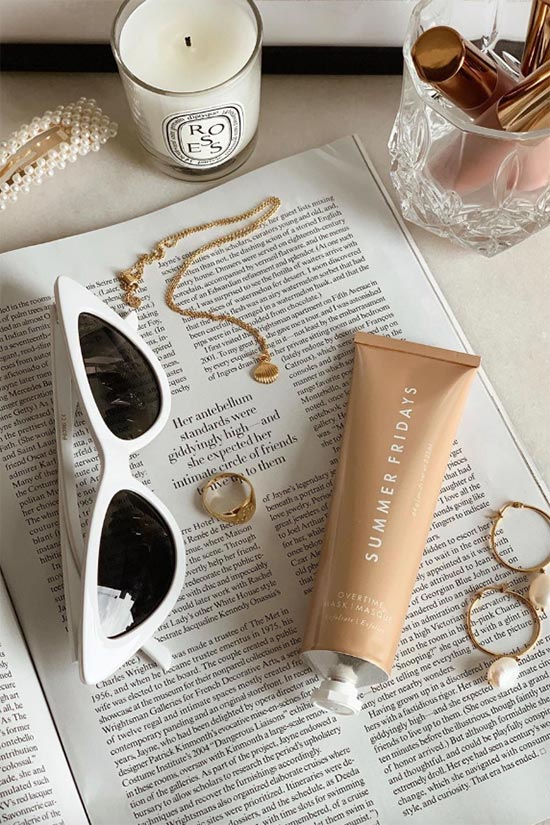
Step 3: Mask
How you put on your mask will depend on the kind of mask you have. Creamy masks can be applied with the hands, like a moisturizer, while clay-based masks are easier to apply with a clean mask brush (a brush that is suspiciously similar to a flat foundation brush), in upward, overlapping strokes.
Sheet masks, which are great for hydrating the skin, are the most difficult to apply since they must be smoothed on carefully without any air bubbles.
Once your mask is on, leave it on per the instructions on the container. 10-15 minutes is usually good for clay masks, 15-30 minutes for creamy masks, and up to an hour for sheet masks.
Once enough time has passed remove your mask by rinsing your face with water, and maybe even wiping it down with a damp face cloth. Sheet masks can simply be removed, with the rest of the product massaged into the skin and with no need to rinse.
Step 4: Rest of the Routine
Once you’ve removed your mask, finish off your combination skincare routine based on whether it is daytime or evening.
Photos via @glowingwell_, Instagram

